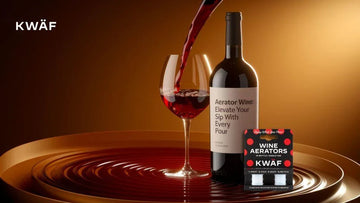Wine enthusiasts and novices often ponder the question, "How many ounces in a bottle of wine?" Whether preparing for a social gathering or simply trying to manage your pour, understanding the standard wine bottle size can be crucial. This article will unravel the mystery behind wine bottle sizes, serving sizes, and why they matter. So, let's raise our glasses and dive into wine measurements.
The Standard Wine Bottle Size
When it comes to wine bottles, the standard size is 750 milliliters. In more familiar terms, this is roughly 25.4 fluid ounces. This site has become the norm for various reasons, balancing the right amount for sharing and ensuring the wine maintains its quality over time. Winemakers worldwide have adopted this standard, making it easier for consumers to gauge how much they pour and how many servings they can expect from a single bottle.
Understanding Ounces in a Glass
Now that we know the standard wine bottle sizes let's break down the serving sizes in a typical glass. A standard wine pour is approximately 5 ounces. This allows for a generous serving without overwhelming the drinker. If you're pouring a glass from a 750ml bottle, you can expect to get around five 5-ounce servings.

Variations in Bottle Sizes
While the 750ml bottle is the standard, it's important to note that wine comes in various sizes. These range from smaller formats like the 375ml half-bottle to larger ones like the magnum (1.5 liters). Each size caters to different occasions and preferences.
- 375ml Half-Bottle: This size is ideal for those who want a smaller quantity without committing to a full bottle. It's also an excellent option for tasting different wines without excessive waste.
- 1.5-Liter Magnum: Perfect for celebrations, the magnum is equivalent to two standard bottles. It's an ideal choice for group settings, ensuring everyone gets a taste without the need for frequent refills.
Why It Matters
Not only is knowing how many ounces in a bottle of wine useful for accuracy, but it also changes how you enjoy wine. Proper serving sizes enhance the tasting experience, allowing the drinker to savor the flavors without feeling overwhelmed. It also helps hosts plan for events, ensuring they have the right amount of wine to accommodate their guests.
Tips for Serving Wine
Now that we've demystified the standard bottle size and serving measurements let's discuss some practical tips for serving wine:

Temperature Matters
Serve your wine at the right temperature to enhance its flavors. White wines are generally served slightly chilled, while red wines are best served at room temperature.
Consider the Glassware
Investing in proper wine glasses can significantly improve the tasting experience. Different glasses are designed for red and white wines, so choose accordingly.
Pouring Etiquette
Hold the bottle by the base to avoid warming the wine with your hand when pouring it. Pour a moderate amount to allow the wine to breathe and release its aromas.
Decoding Wine Label Information
Now that we've covered the ounces in a bottle of wine let's delve into the often perplexing world of wine labels. Learning about the information on a wine label can help you enjoy the drink more and make smarter decisions. So, let's decode the key elements commonly found on wine labels.
Key Elements on a Wine Label
Winery and Vineyard Information:
The label typically displays the winery's name responsible for producing the wine. Additionally, it may mention the vineyard where the grapes were grown, providing insights into the wine's origin.

Vintage Year:
The vintage year signifies the year in which the grapes were harvested. Knowing the wine's characteristics is crucial because climate change might impact grape quality annually.
Alcohol by Volume (ABV):
The ABV indicates the alcohol content of the wine. As a number, it can be different for each type of wine. Understanding the ABV helps gauge the wine's strength.
Wine Varietal:
Some labels prominently feature the grape variety used to make the wine (e.g., Merlot, Chardonnay). This information gives you an idea of the wine's flavor profile.
Wine Region or Appellation:
The label may specify the region or appellation where the grapes were grown. Different regions are known for producing wines with distinct characteristics influenced by the local climate and soil.
Wine Classification:
Wines are often classified as "table wine," "reserve," or "estate." These terms provide insights into the wine's quality and aging process.
The question of how many ounces are in a bottle of wine is neatly answered by the standard 750ml bottle, providing approximately 25.4 fluid ounces. Understanding this measurement allows wine enthusiasts to pour the perfect glass for a cozy evening at home or a festive gathering with friends.
If you want to explore a curated selection of wine aerators or enhance your wine experience, consider visiting kwafwineaerators.com. Discover premium wine aerators and tips to elevate your enjoyment of this timeless beverage. Cheers to the perfect pour!








